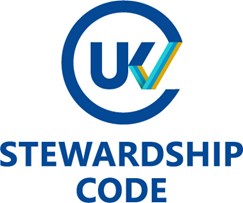1.
We start by conducting sustainability research.
We approach progress with a focus on value
We believe that by working together with others, we can become more efficient and drive longer-term value creation for our stakeholders.
Our purpose is to support our clients through life’s milestones, being there when needed to help build strong, financially secure, enduring futures.
When approaching investment, we believe that by managing sustainability risks and opportunities, we’ll be better able to deliver resilient and stable returns over the long term.
Sustainability and stewardship considerations form a part of our holistic investment decision-making process. So that we can meet the strategic objectives of our stakeholders over appropriate time horizons, this process involves balancing financially material sustainability and financial factors, and takes both current and future needs into account.
We believe the best way we can provide value is by taking a long-term view in our investment decisions and keeping things simple.
We’re proud that both Canada Life Asset Management and Canada Life Limited have been awarded UK Stewardship Code signatory status. Learn more about our stewardship activities here.

We recognise that a company’s ability and willingness to address how it impacts, and is impacted by, sustainability issues can have an important influence on its long-term financial performance. We also understand the effects – both positive and negative – that our investment decisions can have, in a highly interconnected world, on people, society, and the environment.
As such, sustainability considerations and stewardship are relevant to our approach to managing risk and achieving our clients’ long-term investment goals.

We start by conducting sustainability research.

We consider our findings in our investment decision-making process.

By effectively stewarding the assets entrusted to us, we aim to create long-term value.

We monitor and report to help deliver good client and customer outcomes.
Find out more about our responsible investment process and stewardship activities across asset classes, including equities, fixed income, property, and real estate finance.
We place importance on good governance throughout our business and implement processes to monitor and assess our performance.
We see our voting rights as valuable assets in serving our stakeholders’ best interests.
We engage with investee companies to promote business models necessary to sustaining value over the long term.
Learn more by viewing our policies and reports relevant to stewardship.





